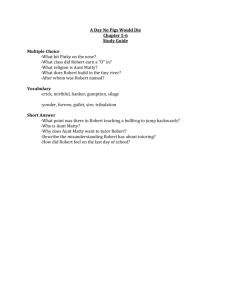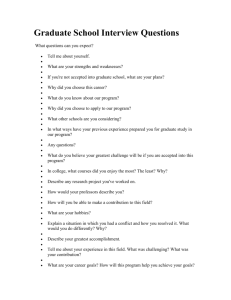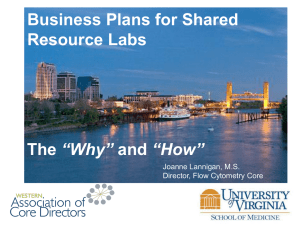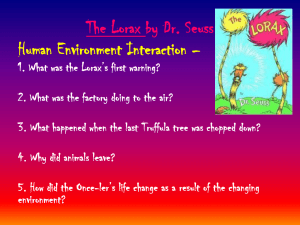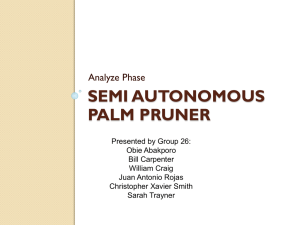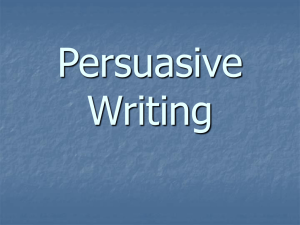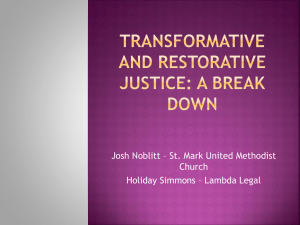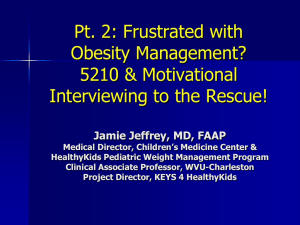Case 21 Science 2nd Benchmark Study Guide Objective 1.a
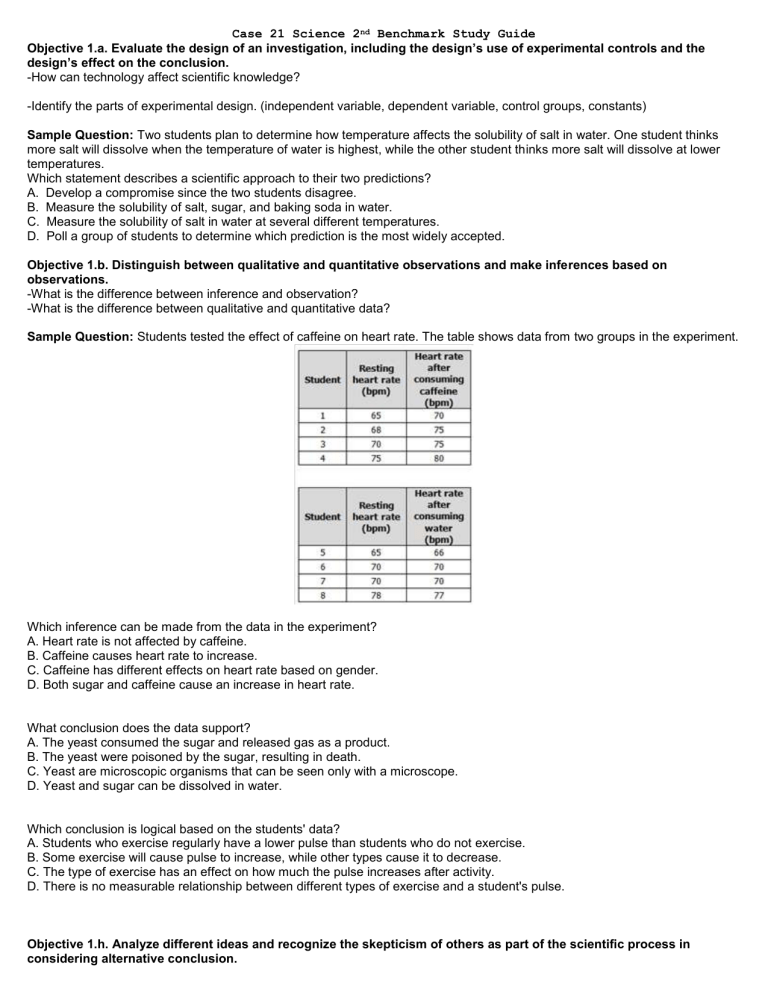
Case 21 Science 2 nd Benchmark Study Guide
Objective 1.a. Evaluate the design of an investigation, including the design’s use of experimental controls and the design’s effect on the conclusion.
-How can technology affect scientific knowledge?
-Identify the parts of experimental design. (independent variable, dependent variable, control groups, constants)
Sample Question: Two students plan to determine how temperature affects the solubility of salt in water. One student thinks more salt will dissolve when the temperature of water is highest, while the other student thinks more salt will dissolve at lower temperatures.
Which statement describes a scientific approach to their two predictions?
A. Develop a compromise since the two students disagree.
B. Measure the solubility of salt, sugar, and baking soda in water.
C. Measure the solubility of salt in water at several different temperatures.
D. Poll a group of students to determine which prediction is the most widely accepted.
Objective 1.b. Distinguish between qualitative and quantitative observations and make inferences based on observations.
-What is the difference between inference and observation?
-What is the difference between qualitative and quantitative data?
Sample Question: Students tested the effect of caffeine on heart rate. The table shows data from two groups in the experiment.
Which inference can be made from the data in the experiment?
A. Heart rate is not affected by caffeine.
B. Caffeine causes heart rate to increase.
C. Caffeine has different effects on heart rate based on gender.
D. Both sugar and caffeine cause an increase in heart rate.
What conclusion does the data support?
A. The yeast consumed the sugar and released gas as a product.
B. The yeast were poisoned by the sugar, resulting in death.
C. Yeast are microscopic organisms that can be seen only with a microscope.
D. Yeast and sugar can be dissolved in water.
Which conclusion is logical based on the students' data?
A. Students who exercise regularly have a lower pulse than students who do not exercise.
B. Some exercise will cause pulse to increase, while other types cause it to decrease.
C. The type of exercise has an effect on how much the pulse increases after activity.
D. There is no measurable relationship between different types of exercise and a student's pulse.
Objective 1.h. Analyze different ideas and recognize the skepticism of others as part of the scientific process in considering alternative conclusion.
-Why is skepticism an important part of science? It allows for the formation of new theories .
Sample Question: Students gathered data to analyze their water consumption. The table shows the range of averages for the class. The students discussed the data to reach conclusions.
Which statement from their discussion describes skepticism about the data?
A. Kendall agrees with the data because it supports the data she collected.
B. Faith concludes that taking showers conserves more water than taking baths.
C. Neelly wonders if the dishwashing data is accurate since the range is so large.
D. Hope recognizes that washing hands uses the least amount of water.
Objective 2.a. Identify patterns found in chemical symbols, formulas, reactions, and equations that apply to the law of conservation of mass.
-State the law of conservation of mass.
-Write the name of each compound: NaCl , CO
2,
H
2
O, C
6
H
12
O
6
Sample Question: Hydrogen reacts with oxygen to produce water as represented by this chemical equation.
8 grams of hydrogen react completely with some oxygen to produce 72 grams of water. How many grams of oxygen are involved in the given reaction?
A.
B.
C.
D.
36 g
56 g
64 g
72 g
Sample Question: Which equation shows a balanced chemical reaction where energy is used to produce sugar and oxygen from carbon dioxide and water?
A.
B.
C.
D.
Objective 2.b. Predict the properties and interactions of given elements using the periodic table of the elements.
-What type of elements form ionic bonds?
-In group 17, which elements form the strongest, most stable bonds?
-What is the pH of an acid? Of a base?
Sample Question: Omar is studying the periodic table and has learned the information shown.
Based upon this information, which halogen forms the most stable compounds with other elements?
A.
B.
C. astatine bromine chlorine
D. fluorine
Objective 2.c. Distinguish the motion of an object by its position, direction of motion, speed, and acceleration and represent resulting data in graphic form in order to make a prediction.
What determines if an object is in motion?
What are the formulas for speed and acceleration?
Sample Questions: Which graph represents a body moving at a constant speed?
A.
B.
C.
D.
Objective 2.d. Relate how electrical energy transfers through electric circuits, generators, and power grids.
-Identify the parts of a circuit.
-Explain the functions of each part of the power grid.
-What are the products of combustion?
-Identify four renewable resources and four nonrenewable resources
-What are some activities that add carbon dioxide to the atmosphere?
Sample Question: What is the role of a substation in the power grid?
A. The substation converts AC to DC.
B. The substation increases voltage so that current can be transmitted long distances.
C. The substation decreases voltage so current can safely enter a house.
D. The substation produces electricity for the grid.
Objective 2.f. Recognize Newton’s Three Laws of Motion and identify situations that illustrate each law (e.g., inertia, acceleration, action, reaction forces).
State Newton’s Laws of Motion and give one example of each.
-What is inertia?
Sample Question: Tom is learning about Newton's Laws of Motion. He and his classmates experienced four different activities, as described in the chart.
Which activity illustrates Newton's Third Law of Motion?
A.
B.
J
K
C.
D.
L
M
Objective 4.a. Compare and contrast the lithosphere and the asthenosphere. (Composition, density, and location continental crust and oceanic crust; Physical nature of the lithosphere (brittle and rigid) with the asthenosphere (plastic and flowing).
-What are two differences between oceanic and continental crust? -Compare & Contrast focus & epicenter
-Where are most faults located? -Describe how convection causes plate movement.
-Describe convergent, divergent and transform boundaries and features occurring at those boundaries.
-What is subduction and when does it occur? -List evidence supporting continental drift.
-Identify the location of the following: mid-ocean ridge, subduction zone, hot spot, continental-continental convergent, divergent continental boundary and transform boundary. what numbered section indicates continental crust? a. section 1 b. section 2 c. section 3 d. section 4
Which layer contains current of flowing magma responsible for moving the lithospheric plates? a. J b. K c. L d. M
Objective 4.b. Describe the cause and effect relationship between the composition of and movement within the Earth’s lithosphere.
Sample question:
Which diagram shows a plate boundary that is typical for the formation of volcanoes?
Objective 4.c. Examine weather forecasting and describe how meteorologists use atmospheric features and technology to predict the weather. Sample questions:
Airplanes that fly in the jet stream can reduce their flight times when they are flying in what direction? a. b. c. north to south east to west west to east d. south to north
The Coriolis Effect is the apparent deflection of an object due to the rotation of the Earth. Which diagram shows this deflection when an object is moving along a north-south path as viewed from the north pole?
Once a tropical storm forms over the ocean, which conditions must exist in its path for it most likely to develop into a hurricane?
-Define fronts and air masses.
-Describe the different kinds of fronts and the weather associated with each.
-What tool is used to measure wind speed?___________________ wind direction?__________________ relative humidity?____________________ temperature?____________________ air pressure?_____________________.
-What type of weather is approaching if air pressur e (barometric pressure) is decreasing?____________________ What if it’s increasing? What symbol on the weather map represent high pressure?__________ low pressure?______________
Which global winds steer hurricanes northwest and into the Gulf of Mexico?__________________________
Which global winds steer the rimenants of a hurricane back toward the east?__________________________
Where are the trade winds located?___________________________________________
Objective 4.e. Explain how the tilt of the Earth’s axis and the position of the Earth in relation to the sun determine climatic zones, seasons and length of days.
- Describe rotation and revolution.
- What would happen if the speed of Earth’s rotation increased?
- Give the latitude lines for each climate zone: Tropical, temperate and polar
- What is the longest day of the year in the Northern Hemisphere? (month and date)
- What causes seasons?
- What is the location of the sun during an equinox?
- If Earth is closer to the sun in January, why is it colder than July?
Sample questions:
Which season is the northern hemisphere experiencing? a. fall b. winter c. spring d. summer
Objective 4.f. Describe the hierarchical structure of the universe and examine the expanding universe to include its age and history and the modern techniques used to measure objects and distances in the universe.
-Compare and Contrasts light year and astronomical unit and describe when its appropriate to use each.
-Objects moving away from the Earth, shift to the __________ end of the spectrum.
-Objects moving closer to the Earth, shift to the ___________ end of the spectrum.
-Is our universe expanding or shrinking?
-What is the approximate age of the universe?
-Galaxies are classified by their shapes. The 3 most common shapes are ________________, __________________, and
____________________.
- The name of our galaxy is the ___________________ and it has a _____________________ shape.
-The most excepted theory for the origin of the universe is the _______________________.
-Who came up with this theory______________________.
-What color are the hottest stars?____________________
-What gas is the main component of most stars?____________________
-What characteristic of a star determines its fate?___________________
Sample questions:
Objective 2.e. Contrast various components of the electromagnetic spectrum and predict their impacts on living things.
As the wavelength increase the frequency and energy of the wave ________________.
Which waves have the lowest frequency and longest wavelength?________________________
Which waves have the highest frequency and shortest wavelength?______________________
Which waves have the greatest amount of energy?_________________________
Draw a line to match the description to the wave type.
Radio
Microwaves
Infrared
Visible light
Ultraviolet
X-rays
Gamma rays
Prolonged exposure can harm skin (skin cancer)
Only part of the spectrum the human eye can detect
Used to transmit information
Humans release this in the form of heat
Used in cell phones. Might cause cancer
Kills living cells, used for deep medical imaging
Damaging to soft tissue, used for medical imaging
When comparing electromagnetic waves, which has the least energy? a. Gamma
Exposure to what type of electromagnetic
radiation had been proven to cause skin cancer? b. infrared c. microwaves d. xrays
Which waves have a lower frequency than visible light? a. gamma a. infrared light b. radio waves c. ultraviolet light d. visible light b. infrared c. ultraviolet d. x-rays
Objective 4.h. Justify why an imaginary hurricane might or might not hit a particular area, using important technological resources.
